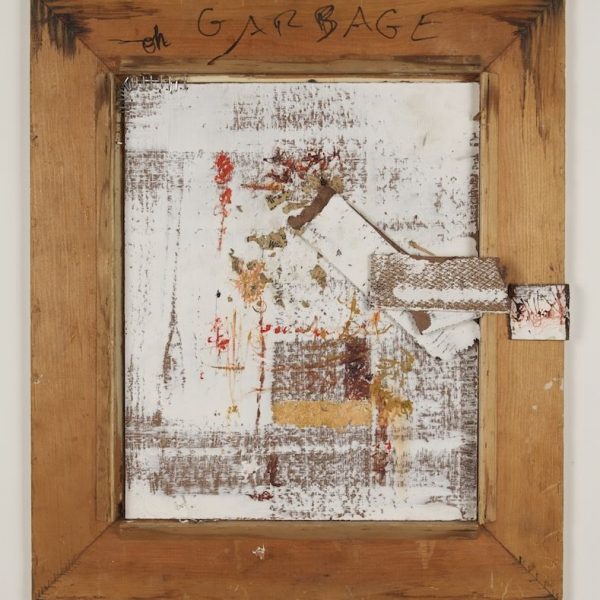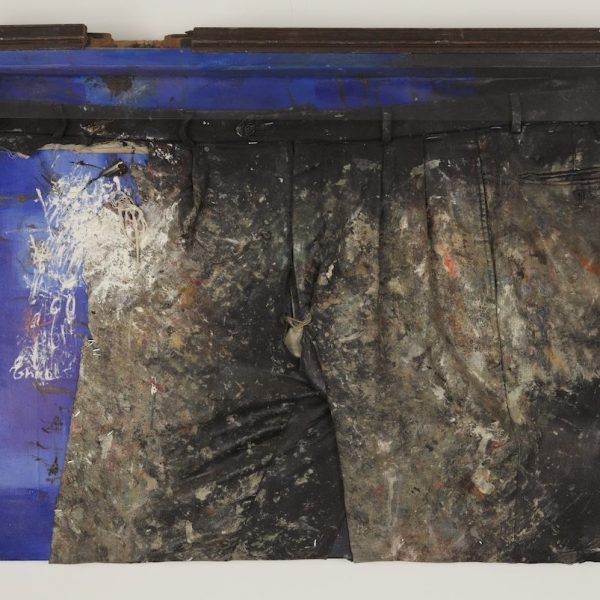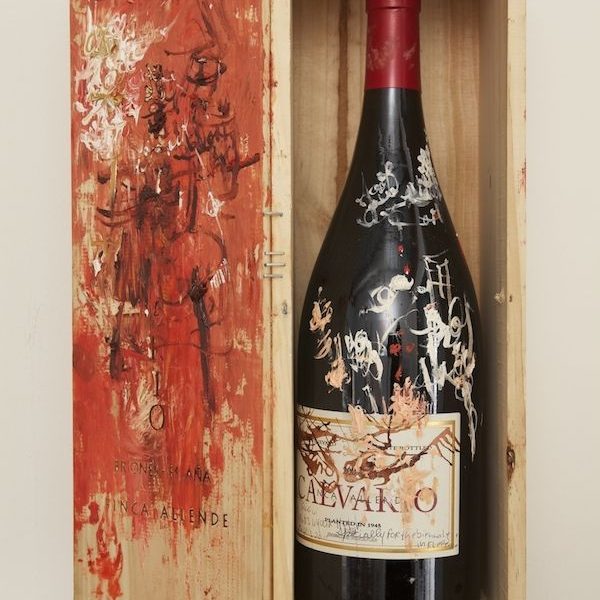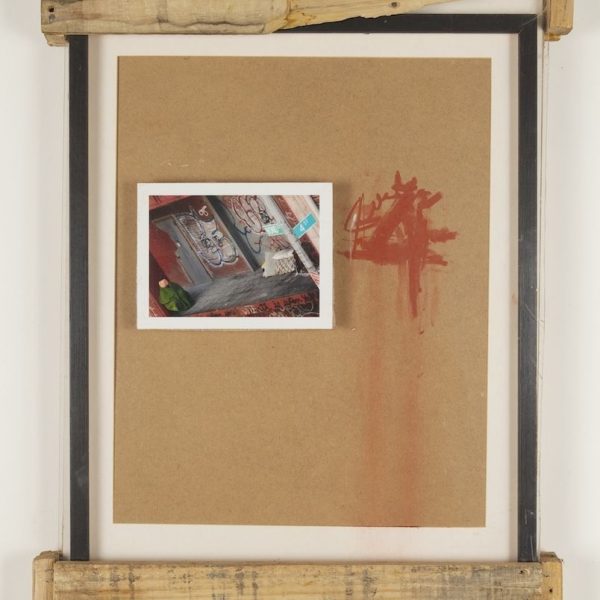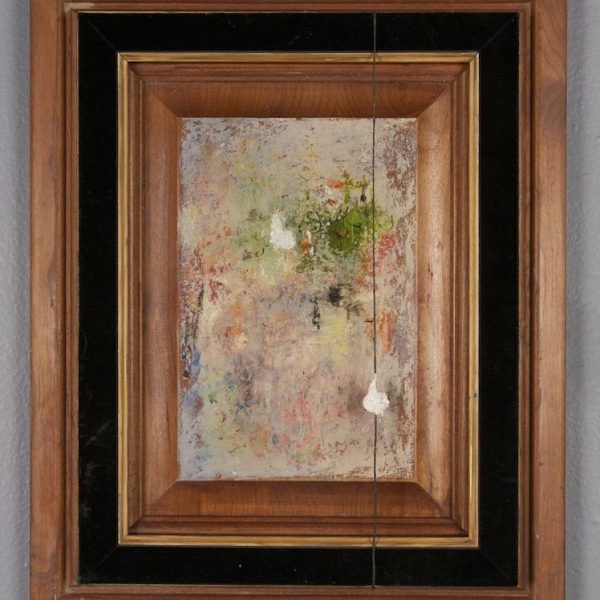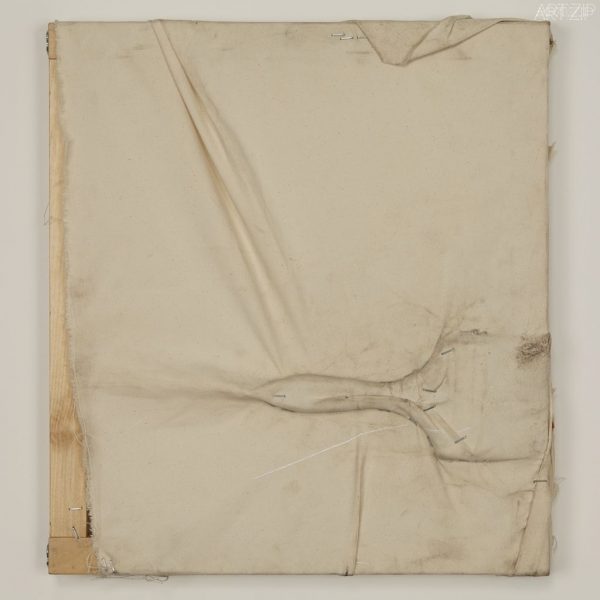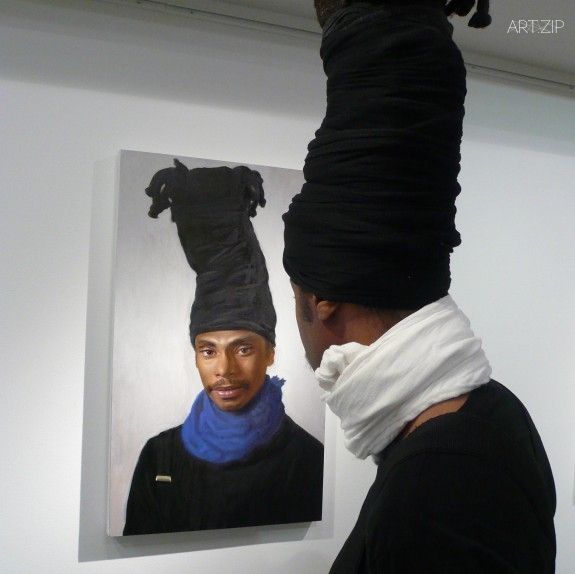
每年夏季的肖像畫大獎賽一直以來都是國家肖像美術館備受矚目的一項活動。今年有來自全球的2377件參賽作品,有機會參與展覽的只有其中的55件,其中包括各類獎項,第一名甚至能豐收30000英鎊, 這對於青年藝術家們來說確實是筆豐碩的獎勵。
2014年是此項活動的第35個年頭,在開幕典禮上,一位“奇裝異服”的青年吸引了媒體們的目光。他並不是聚光燈下的明星藝術家,他此次的身份僅僅是位模特,綠葉——藝術家Patrik Graham的畫中人。
在瞭解該畫作創作背景的同時,無意中得知畫中人Engels竟然也是一位藝術家,和Graham一樣來自紐約的布魯克林。從被動參與藝術回到主動創作藝術的身份后,筆者專訪了這位來自布魯克林的海地藝術家Engels,聽他講述這些年的創作歷程。
1. Would you please give us a brief introduction of yourself?
I grew up in Port au Prince, Haiti with my family—mom, brothers, sisters, grandmother, aunt and uncle. I realized I was an artist when I was 11-years-old. I see beauty in everything. I am an artist. I cannot imagine doing anything else.
請簡單介紹下你自己。
我在海地的首都太子港長大,那裡有我的家人﹣祖母,母親,兄弟姐妹,還有叔叔嬸嬸。我11歲的時候我就覺得自己一定會成為藝術家,因為我總能從萬物中發現美。現在的我已經是一名職業藝術家了,我也無法想像自己不做藝術家會做什麼。
2. When I first saw you, you were in the portrait of Patrik Graham. I found your figure is really distinctive,so how are you positioning yourself? Is there any relevant with your personality?
Patrik’s portrait of me came less from my appearance than from our friendship, our bond as artists. Our studios were a few doors apart in a building along side Brooklyn’s Gowanus Canal. Although we are from very different backgrounds—I am self-taught and Patrik is from the classical realist school in Florence— we spent a lot of time in each other’s studio discussing and critiquing each other’s work. He asked me to sit for a portrait. He captured a sense of grace, nobility. I was struck when I saw my image so bold and dignified on the front of National Portrait Gallery in London, the significance of my image being on the banner of a European museum in terms of history, race, and identity.
當我第一次見你的時候,你是藝術家Graham的畫中人。我覺得你的形象非常的與衆不同,你是如何給自己定位的呢?和你的性格有關嗎?
Graham畫裡的我表現的並不僅僅是我的外在形象,更多的是表達我們之間的友誼,和同為藝術家的這種特殊聯繫。我們的工作室離得很近,也都在布魯克林郭瓦納斯運河邊的同一棟大樓裡。雖然我們的背景十分的不同,我不像他受過專業訓練,我是自學的,而格拉哈姆在佛羅倫薩學習的是古典現實主義學派,我們常常在對方的工作室裡互相討論彼此的作品。當時他要我做他的模特,我覺得他的畫捕捉到了一種高貴和典雅。當我看到自己的畫像那麼耀眼地陳列在國家肖像畫廊的時候,我既驚喜又驕傲。你要知道,在歐洲博物館裡呈現我的畫像並不只是我的個人榮耀問題,更是在歷史、種族和自我認同方面體現了重要意義。
3. You born in Haiti, and you base in Brooklyn now. What’s the point that Brooklyn appeals to you rather than other places?
Haiti is a country where Santa Claus shows up rarely and just for a few. My family came to Brooklyn for opportunity. My mother came first. She sent for us a few years later after she settled. I arrived in Brooklyn when I was 15-years-old and have been here since. I have lived in other places—Sweden, Austria. Yet, there is something special about Brooklyn. It is gritty and full of energy. For me, it is home. Many have a romantic notion the borough is bohemian, an enclave of artists. In the late 80’s, looking for cheap rents, artists began to trickle over from Manhattan to Brooklyn, mostly Williamsburg and Dumbo. The areas were dangerous. Not even a dog would walk alone. Gentrification followed the artists. The artists got priced out of the neighborhoods. The rents became too high for an artist to survive. Many moved deeper into Brooklyn or left. The same is happening in Bushwick now.
你在海地出生,而你現在在布魯克林發展。你覺得布魯克林有什麼吸引你的地方嗎?
海地就是一個連聖誕老人也不常光臨的國家。我的家人來到布魯克林尋找更好的發展機會。我母親先來這裡打拼了些年,她穩定了以后再把我們幾個也接了過來,所以我自15歲起就一直在這兒生活了。我也有在別處生活的經歷,像瑞典,奧地利。布魯克林很特別,这里很现实,但又充滿活力。對我來說,這裡就是家。在許多人的浪漫幻想里都認為這裡是一個不受約束的地方,是藝術家們的世外桃源。在八十年代晚期,因為這裡租金低廉,藝術家們都漸漸從曼哈頓搬到了布魯克林,基本上都聚居在Williamsburg和Dumbo區域。當時這些地方很不安全,甚至連狗都不會獨自行動。可是你知道,中產階級都愛跟著藝術家跑,慢慢地藝術家都負擔不起這裡的租金了,這導致很多藝術家們搬到布魯克林更遠的地方去,有些還甚至搬離布魯克林。現在這種情況同樣發生在布什維克地區。
4. You are self-taught artist. What drives you to seek for art? What drives you to seek for abstract art?
I am looking for ways to express freely. At first glance, my work may appear as abstract, but it is more free-a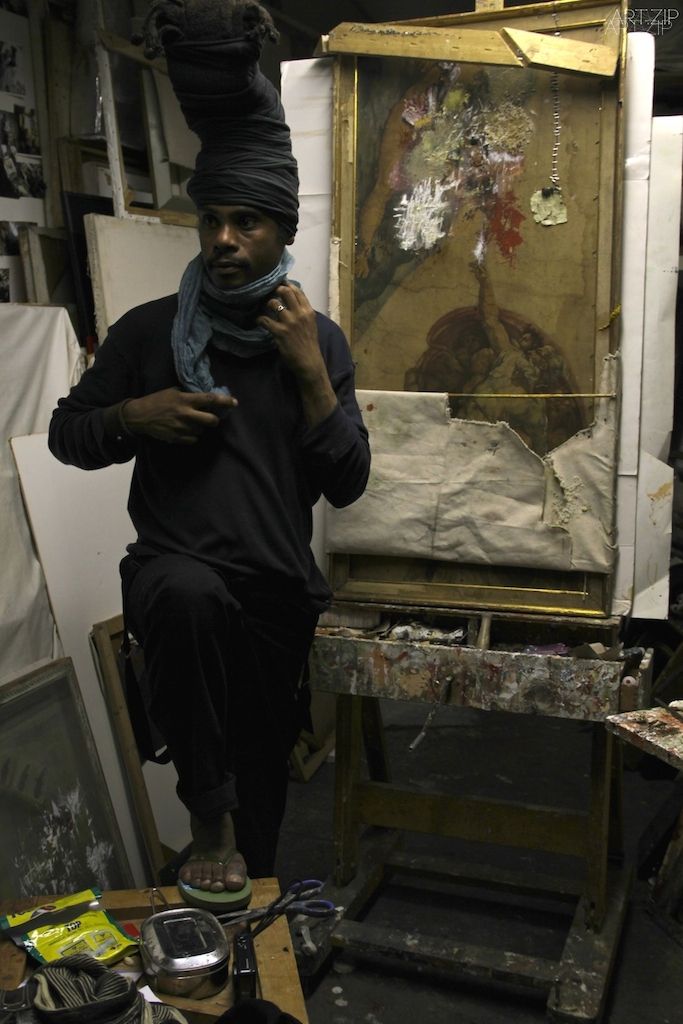 ssociative and polyvalent. I work between highly porous boundaries of conventions of abstraction and figuration, incorporating elements of each, sometimes even using a realistic painting or photographs in a piece. I often “misuse” canvas, stretcher bars, paint, and staples—staples can function as “paint,” for example. Playful and always subversive, I question what a painting is, challenge the embedded hierarchy of art and art history and by so doing I begin to ask bigger questions.
ssociative and polyvalent. I work between highly porous boundaries of conventions of abstraction and figuration, incorporating elements of each, sometimes even using a realistic painting or photographs in a piece. I often “misuse” canvas, stretcher bars, paint, and staples—staples can function as “paint,” for example. Playful and always subversive, I question what a painting is, challenge the embedded hierarchy of art and art history and by so doing I begin to ask bigger questions.
你是自學成才的藝術家。是什麼令你走上藝術之路,你又是怎麼開始發展抽象藝術的呢?
我試圖尋找最自由的表達方式。乍看我的作品也許較為抽象,但其實它是自由的、無限的聯想組合。我的創作介於抽象和具象之間,結合兩者,有時我還會運用寫實繪畫作品或照片到作品中。我也經常“濫用”畫布、伸縮桿、顏料和釘書機,(釘書機其實也可以作為“顏料”使用)。我會問自己繪畫是什麼,我認為是好玩的,也可以是顛覆性的,它應該挑戰藝術和藝術史裡固有的等級制度,實踐以後我再問其他更宏大的問題。
5. What are your future plans? Any forthcoming exhibitions or projects?
I do not know where my mind will take me next. That is the excitement of art. Art is freedom.
你未來的計劃是什麼?一些未來的展覽或計劃?
我不知道下一秒的我會怎樣,新的想法就會帶我去新的方向了吧,這就是藝術令人激動的地方,藝術就是自由。
Find out more:
Interview & Text by Qiwen Ke
採訪 x 撰文:柯淇雯

